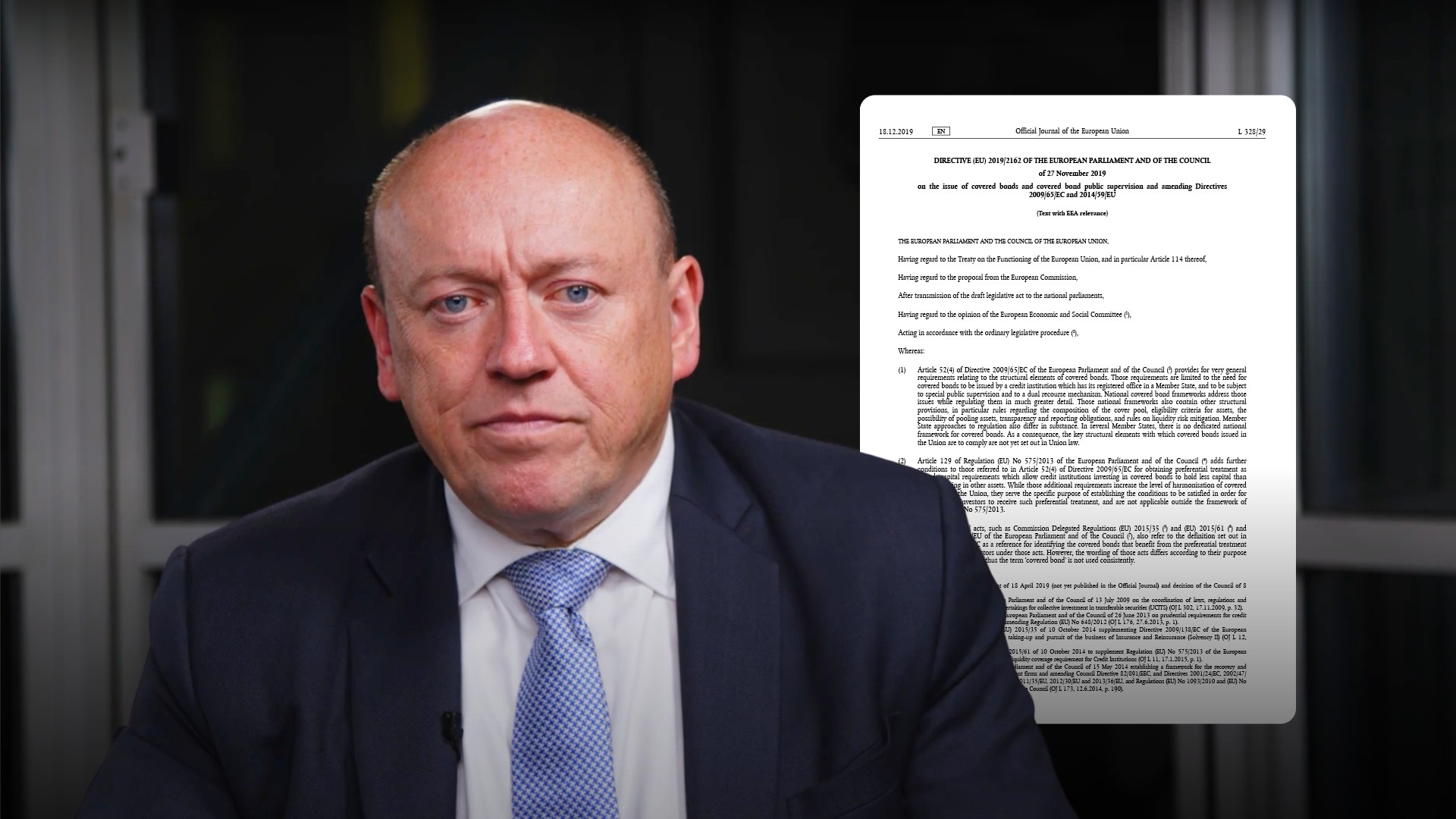
EU Covered Bond Directive

Richard Kemmish
30 years: Capital markets & covered bonds
Covered bonds have been around for 250 years, but a pan-European law for them - the EU Covered Bond Directive - is relatively new. Richard discusses how this Directive came about, what it says and what the implications are for the future of the covered bond market.
Covered bonds have been around for 250 years, but a pan-European law for them - the EU Covered Bond Directive - is relatively new. Richard discusses how this Directive came about, what it says and what the implications are for the future of the covered bond market.

EU Covered Bond Directive
13 mins 30 secs
Key learning objectives:
Explain what the Directive consists of along with their structural and supervisory features
Identify the amendments to the Capital Requirements Rule
Discuss the implications of the Directive
Conclude whether non-EU issuers should get fair treatment
Overview:
The EBA published a report in 2014 suggesting covered bond law in 17 areas could be better organised. Consequently, these proposals formed the EU’s Covered Bond Directive In 2019 which essentially states the outcome needed from each country’s covered bond law.
What is the EU Covered Bond Directive?
It consists of 2 separate pieces of law:
- A Directive that sets down the broad details of what a covered bond must look like
- An amendment to capital requirements, laying down further details for covered bonds that want to be treated as such
What are some of the structural features of the Directive?
There are 34 articles in the Directive, articles 4 to 17 cover key structural features.
- Article 8 – Allows group companies to issue covered bonds to each other in order to pool the assets in one company that then has enough to issue a bond
- Article 9 – Allows member states to come up with ways to combine assets from more than one bank
- Article 13 – Cover pool monitors must be independent from auditors and member states need to lay down details for their appointments
- Article 16 – This says that covered bonds need to keep a stock of liquid assets to cover net outflows from the pool for the next 6 months
- Article 17 – This effectively waives A16 in the case of structures that could extend the maturity if they meet certain criteria defined in the article
What are the supervisory features of the Directive?
Key articles 18 to 26 outline the supervision that member states must have in place.
- Supervisors must approve covered bond programmes before they are first used
- The information that issuers must provide to their supervisors
- The powers that the supervisor must have in ‘business as usual’ and in the case of insolvency or resolution of the issuer
What amendments have been made to the Capital Requirements rule?
These amendments include some useful clarifications. For example, in the case of A129, which outlines the criteria for bank investors to be able to apply preferential risk-weightings to their holdings of bonds – standardising how the LTV limits on assets are applied over the life of the cover pool. Also, specifying that mortgage assets backing the covered bonds have to conform to the definition of mortgages used elsewhere in the Directive.
Minimum over-collateralisation – The rule states a minimum of 5%, however, the amendment says that countries can wave the 5% rule if over-collateralisation is defined with reference to the risk-weights of the loans – or if the properties backing the assets are valued on a more conservative basis.
What are some examples of cases where O-C is <5%?
- Countries with safe mortgages
- Individual issuers that have not attempted to get an improved rating for their covered bond
- When some covered bonds have eliminated refinancing risk by producing bonds that amortise in parallel to the cover pools
What are the implications of the new Directive?
- Countries will have to tighten their covered bond laws
- Some countries may have to pass new covered bond laws
- Some countries may have to make changes to covered bond laws regarding investor protection
- Spain’s current structure does not employ the concept of a cover pool and thus the Directive is not compatible with their covered bond law, hence, they will need to transition to the new structure to protect the rights of their existing bondholders
Should issuers outside the EEA get equivalent treatment?
In the past it was a requirement that issuers are in the European Economic Area and thus growth in covered bonds outside of Europe have meant investors have not been able to give them the same treatment.
It is expected however; the new Directive will be the de facto global standard for covered bonds in the near future.

Richard Kemmish
There are no available Videos from "Richard Kemmish"

